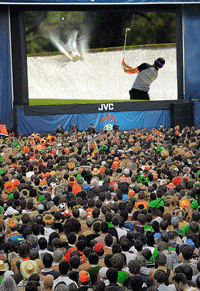Today’s technology has had a dramatic impact on the way the game is played (see Titanium) but it has also changed the way the game of golf is watched. Watching golf on television continues to get more amazing every year as super-slow-mow, super-zoom high definition cameras allow us to count the granules of sand on a player’s golf ball. With that microscope comes the ever increasing chance that a camera will reveal a Rules infraction that the player couldn’t see.
No event on the PGA Tour schedule is more highly scrutinized by television viewers than The Masters. Is it coincidental that the USGA revised Decision 33-7/4.5 (Competitor Unaware of Penalty Returns Wrong Score; Whether Waiving or Modifying Disqualification Penalty Justified) the Wednesday before the start of The Masters? Doubtful. Coincidence or not, the Decision is thoughtfully constructed and could change the outcome of a future major championship.
The first thing to know about this revised Decision is that it will not save a golfer from ignorance of the Rules. If a player violates a Rule (see recent example of Camilo
Villegas moving a loose impediment while his ball was in motion) they are still on the hook for failing to apply the penalty strokes associated with the infraction. This Decision would not change the disqualification of players such as Villegas, Craig Stadler (remember the towel) or Davis Love III for failing to replace his ball when he inadvertently moved it several inches, failed to replace it and did not access the 2-stroke penalty for failing to do so.
The operative words in the Decision are words such as “close-up, super-slow-motion video replay” and “high-definition video replay.” The Decision is written very specifically to deal with situations where this technology reveals a Rules infraction (i.e. touching sand in a bunker with the club on the backswing, hitting the ball more than once, failing to replace a ball that moved from dimple #231 to dimple #232, etc.). In these instances the committee is permitted to waive the penalty of disqualification if a player fails to assess a penalty under these circumstances and signs an incorrect scorecard as a result. While the player is spared golf’s “death penalty” he still receives the appropriate one or two-stroke penalty.
This Decision is a great example of the USGA responding to technological advance but not compromising on the integrity and spirit of the Rules. It only stands to reason that a player shouldn’t be disqualified for failing to apply a penalty that only a high-definition super-zoom lens could have seen. On the other hand, if a “real time” replay shows that a player simply didn’t know the Rules this Decision does not give him a free pass. One of the most important principles in the Rules of Golf is that the player is responsible for knowing the Rules. This Decision doesn’t change that.


